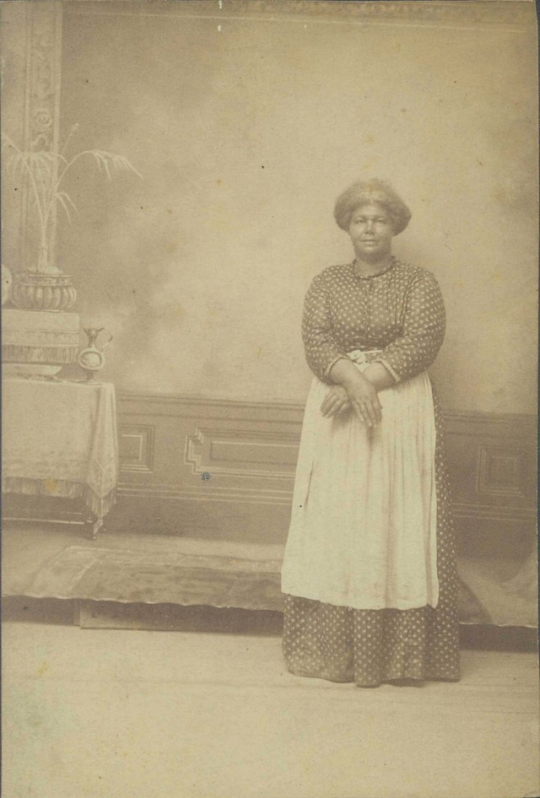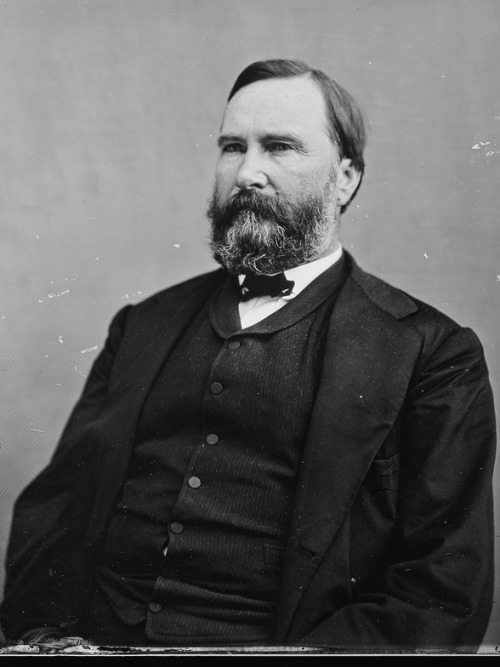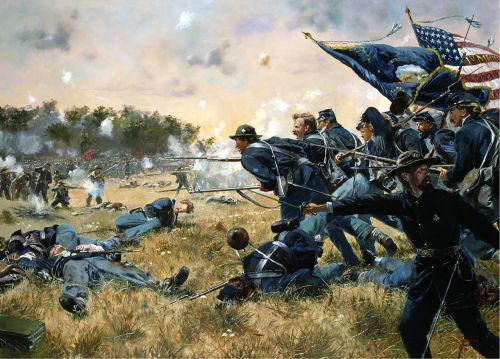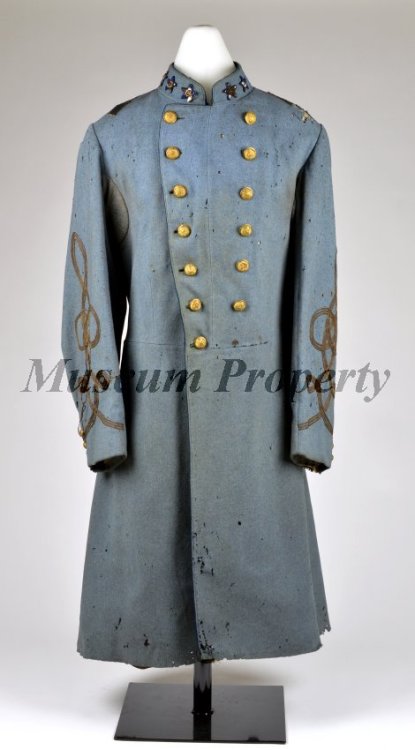#battle of gettysburg
General James Longstreet(Confederate)
One of the most prominent generals of the war, and later one of the Confederacy’s most controversial figures, this picture of Longstreet was taken at some point after the war had ended. We find him looking well-fed and distinguished, with his salt-and-pepper beard perhaps betraying a touch of artificial help in his very dark hair.
Longstreet was one of the best generals on either side, a senior corps commander in General Lee’s Army of Northern Virginia for much of the conflict. His finest moment came perhaps at the Second Battle of Bull Run, when he led 25,000 men in the largest mass assault of the entire war to rout the Union Army’s left flank. After the war, Longstreet became the most senior Confederate to join the Republican party during Reconstruction, supporting his old military school friend Ulysses S Grant’s bid for the presidency 1868. Longstreet later served the US government in a variety of roles, including Ambassador to the Ottoman Empire. Derided as a traitor by many in the South, Longstreet was blamed for the defeat at Gettysburg and much else besides, and his reputation has only recovered in recent times.
Post link
Women’s History Month
Margaret Palm-African-American History-Civil War
Margaret Palm lived in Gettysburg, Pennsylvania, along with 190 other free African-Americans, making up about 8% of the town’s population. She rented a white shack on the west end of Emmitsburg Road, and lived there with her husband, Alf Palm and their one child.
During the months leading up to the Battle of Gettysburg, African-American members of the Gettysburg community began fleeing their homes for fear that their freedom and safety would be in jeopardy, once the Confederate army invaded their little town.
There are many stories that surround the persona of “Mag Palm”, as she was called, some perhaps mere legends passed on by other civilians over the years. One legend refers to Mag as “Maggie Bluecoat”, referring to the story that she wore a blue coat of an officer of the War of 1812, and carried a musket while aiding other slaves in their fight for freedom from slavery.
One account, however, of an attempted kidnapping of Mag Palm by two local men is well known and well documented. Many free African-Americans were often victims of kidnapping by their own white neighbors, often to be sold off to Southerners for slavery.
Like the majority of African-American women in the Gettysburg community during the Civil War years, Mag made a hard living by scrubbing floors and washing the clothes of her white neighbors. One cold winter night in 1858, three years before the war even began, upon returning home from picking up her pay from one of her employers, Mag was attacked by two men who tried to tie her hands and take her away. . Mag managed to fight both men off with the help of another neighbor, John Karseen, a store owner in town, who witnessed the attack. Years later Mag Palm was photographed demonstrating how the men bound her hands and documented the attack for history.
During the battle, her home on Emmitsburg Road was occupied by the Union army and eventually destroyed in the fighting on the last day of the Battle of Gettysburg, July 3, 1863. Despite hardships in her own marriage, as her husband drank and was often prone to fits of rage, she managed to buy her own home again along Long Lane, a black community in the town, after the battle was finally over. She continued to struggle financially and was never able to stop beating rugs and scrubbing floors for a living.
Mag Palm passed away in October of 1896 from a heart ailment. She was buried in the Lincoln Cemetery in Gettysburg, among many other African-American civilians of the town. Her courageous story of struggle and survival is only one of the many forgotten African-American civilian stories of the women who lived and survived the battles fought right in their own communities, during the Civil War.


The pasture of battle: A farmhouse on the spot in the pasture where northern troops’ commander, General Meade organized for battle. The fighting took places only a few hundred feet away.
Resources
The Victor of Gettysburg, The Life and Career of General George Meade, Charles River Editors
Gettysburg: The Last Invasion,by Allen Guelzo
Gettysburg,by Stephen W. Sears
Post link
July 3, 1863 - Battle of Gettysburg ends
“On the third day of the Battle of Gettysburg, Confederate General Robert E. Lee’s last attempt at breaking the Union line ends in disastrous failure, bringing the most decisive battle of the American Civil War to an end.
In June 1863, following his masterful victory at the Battle of Chancellorsville, General Lee launched his second invasion of the Union in less than a year. He led his 75,000-man Army of Northern Virginia across the Potomac River, through Maryland, and into Pennsylvania, seeking to win a major battle on Northern soil that would further dispirit the Union war effort and induce Britain or France to intervene on the Confederacy’s behalf. The 90,000-strong Army of the Potomac pursued the Confederates into Maryland, but its commander, General Joseph Hooker, was still stinging from his defeat at Chancellorsville and seemed reluctant to chase Lee further. Meanwhile, the Confederates divided their forces and investigated various targets, such as Harrisburg, the Pennsylvania capital.
On June 28, President Abraham Lincoln replaced Hooker with General George Meade, and Lee learned of the presence of the Army of the Potomac in Maryland. Lee ordered his army to concentrate in the vicinity of the crossroads town of Gettysburg and prepare to meet the Federal army. At the same time, Meade sent ahead part of his force into Pennsylvania but intended to make a stand at Pipe Creek in Maryland.
On July 1, a Confederate division under General Henry Heth marched into Gettysburg hoping to seize supplies but finding instead three brigades of Union cavalry. Thus began the Battle of Gettysburg, and Lee and Meade ordered their massive armies to converge on the impromptu battle site. The Union cavalrymen defiantly held the field against overwhelming numbers until the arrival of Federal reinforcements. Later, the Confederates were reinforced, and by mid-afternoon some 19,000 Federals faced 24,000 Confederates. Lee arrived to the battlefield soon afterward and ordered a general advance that forced the Union line back to Cemetery Hill, just south of the town.
During the night, the rest of Meade’s force arrived, and by the morning Union General Winfield Hancock had formed a strong Union line. On July 2, against the Union left, General James Longstreet led the main Confederate attack, but it was not carried out until about 4 p.m., and the Federals had time to consolidate their positions. Thus began some of the heaviest fighting of the battle, and Union forces retained control of their strategic positions at heavy cost. After three hours, the battle ended, and the total number of dead at Gettysburg stood at 35,000.
On July 3, Lee, having failed on the right and the left, planned an assault on Meade’s center. A 15,000-man strong column under General George Pickett was organized, and Lee ordered a massive bombardment of the Union positions. The 10,000 Federals answered the Confederate artillery onslaught, and for more than an hour the guns raged in the heaviest cannonade of the Civil War. At 3 p.m., Pickett led his force into no-man’s-land and found that Lee’s bombardment had failed. As Pickett’s force attempted to cross the mile distance to Cemetery Ridge, Union artillery blew great holes in their lines. Meanwhile, Yankee infantry flanked the main body of “Pickett’s charge” and began cutting down the Confederates. Only a few hundred Virginians reached the Union line, and within minutes they all were dead, dying, or captured. In less than an hour, more than 7,000 Confederate troops had been killed or wounded.
Both armies, exhausted, held their positions until the night of July 4, when Lee withdrew. The Army of the Potomac was too weak to pursue the Confederates, and Lee led his army out of the North, never to invade it again. The Battle of Gettysburg was the turning point in the Civil War, costing the Union 23,000 killed, wounded, or missing in action. The Confederates suffered some 25,000 casualties. On November 19, 1863, President Lincoln delivered his famous Gettysburg Address during the dedication of a new national cemetery at the site of the Battle of Gettysburg. The Civil War effectively ended with the surrender of General Lee’s Army of Northern Virginia in April 1865.”
This week in History:
June 30, 1859 - Daredevil crosses Niagara Falls on tightrope
July 1, 1867 - Canadian Independence Day
July 2, 1964 - Johnson signs Civil Rights Act
July 3, 1890 - Idaho becomes 43rd state
July 4, 1776 - American colonies declare independence
July 5, 1865 - Salvation Army founded
July 6, 1944 - Major League Baseball’s first All-Star Game is held
Thiscoat, worn by William Dorsey Pender, Sr. during the Battle of Gettysburg, can be found in the collection of the American Civil War Museum.
Post link





